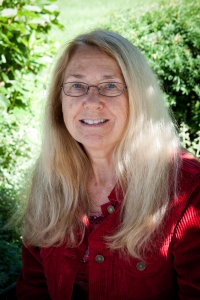
Judith Van Houten
University of Vermont
Project Director
Click photo to close
Judith Van Houten
judith.vanhouten@uvm.edu- Dr. Van Houten's Biography
- The Van Houten Lab
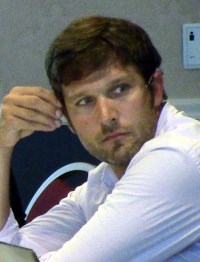
Andrew Schroth
University of Vermont
Co-Principle Investigator/
Sensor Project
Click photo to close
Dr. Andrew W. Schroth is a low temperature biogeochemist and an Assistant Research Professor of Geology at the University of Vermont. He holds a BA in Geology from Colgate University, and MS and PhD degrees in geochemistry from Northern Arizona University and Dartmouth College respectively. Dr. Schroth's research focuses on quantitatively describing the environmental factors controlling nutrient and pollutant lability in soils and aqueous environments, with an overarching focus on understanding and/or predicting a biogeochemical system's response to changes in landscape and climate. Prior to joining the University of Vermont, Dr. Schroth was a Mendenhall Postdoctoral Scholar and Research Scientist at the USGS Woods Hole Coastal and Marine Science Center in Woods Hole, MA.
Andrew Schroth
aschroth@uvm.eduDr. Andrew W. Schroth is a low temperature biogeochemist and an Assistant Research Professor of Geology at the University of Vermont. He holds a BA in Geology from Colgate University, and MS and PhD degrees in geochemistry from Northern Arizona University and Dartmouth College respectively. Dr. Schroth's research focuses on quantitatively describing the environmental factors controlling nutrient and pollutant lability in soils and aqueous environments, with an overarching focus on understanding and/or predicting a biogeochemical system's response to changes in landscape and climate. Prior to joining the University of Vermont, Dr. Schroth was a Mendenhall Postdoctoral Scholar and Research Scientist at the USGS Woods Hole Coastal and Marine Science Center in Woods Hole, MA.
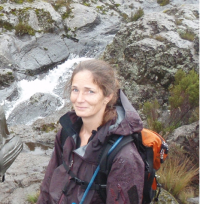
Carol Adair
University of Vermont
Experimental Economics group
Click photo to close
Research interests include global change, terrestrial ecosystem ecology and biogeochemistry. Dr. Adair's research combines theory, experimentation and quantitative methods to understand and predict ecosystem responses to natural and anthropogenic environmental changes.
Carol Adair
Carol.Adair@uvm.eduResearch interests include global change, terrestrial ecosystem ecology and biogeochemistry. Dr. Adair's research combines theory, experimentation and quantitative methods to understand and predict ecosystem responses to natural and anthropogenic environmental changes.
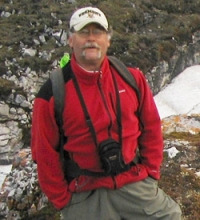
Breck Bowden
University of Vermont
Sensor Project
Click photo to close
Areas of Interest:
Interactions between hydrological and biogeochemical processes, especially as these processes are influenced by land use practices and land cover characteristics at catchment scales. Uptake and use of science knowledge by resource managers, policy makers, and community stakeholders.
Breck Bowden
breck.bowden@uvm.eduAreas of Interest:
Interactions between hydrological and biogeochemical processes, especially as these processes are influenced by land use practices and land cover characteristics at catchment scales. Uptake and use of science knowledge by resource managers, policy makers, and community stakeholders.
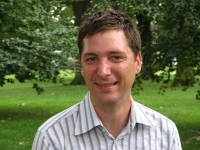
Patrick Clemins
University of Vermont
Intern Program
and Diversity
Click photo to close
Cyber Specialist for the Vermont EPSCoR program. In this role, he provides support to students and researchers across the state of Vermont using high performance computing (HPC) resources and promotes the proliferation of Internet2 access for Vermont's schools, museums, libraries, and other institutions of research and learning. Before moving to Vermont, he was the Director of the AAAS R&D Budget and Policy Program where he served as an international expert on the U.S. federal research and development investment, disseminating data and analyses through presentations, publications, and web content to a variety of audiences including national and international policy makers, scientific associations, journalists, and the research community. Prior to joining AAAS, he was an AAAS Science and Technology Policy Fellow at the National Science Foundation in the Directorate for Biological Sciences. In the Division of Biological Infrastructure, he focused on fostering collaboration between the biological sciences and the computing and engineering research communities and the use of computing technologies for outreach and community building. He received his bachelors, masters, and doctorate in Electrical and Computer Engineering from Marquette University, focusing on machine learning, digital signal processing, and bioacoustics.
Patrick Clemins
patrick.clemins@uvm.eduCyber Specialist for the Vermont EPSCoR program. In this role, he provides support to students and researchers across the state of Vermont using high performance computing (HPC) resources and promotes the proliferation of Internet2 access for Vermont's schools, museums, libraries, and other institutions of research and learning. Before moving to Vermont, he was the Director of the AAAS R&D Budget and Policy Program where he served as an international expert on the U.S. federal research and development investment, disseminating data and analyses through presentations, publications, and web content to a variety of audiences including national and international policy makers, scientific associations, journalists, and the research community. Prior to joining AAAS, he was an AAAS Science and Technology Policy Fellow at the National Science Foundation in the Directorate for Biological Sciences. In the Division of Biological Infrastructure, he focused on fostering collaboration between the biological sciences and the computing and engineering research communities and the use of computing technologies for outreach and community building. He received his bachelors, masters, and doctorate in Electrical and Computer Engineering from Marquette University, focusing on machine learning, digital signal processing, and bioacoustics.
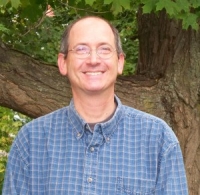
Steven Exler
University of Vermont
Technologist
Click photo to close
Steven Exler is the Technologist for the Vermont EPSCoR group.
His work includes application design and development as well as staff support. He holds a M.S. degree in Computer Systems Management from the University of Maryland and a B.S in Information Systems Management from the University of Maryland.
Steven Exler
sexler@uvm.eduSteven Exler is the Technologist for the Vermont EPSCoR group.
His work includes application design and development as well as staff support. He holds a M.S. degree in Computer Systems Management from the University of Maryland and a B.S in Information Systems Management from the University of Maryland.
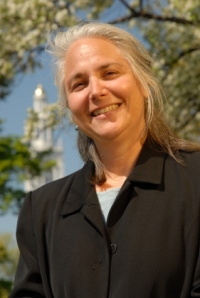
Lillian Gamache
University of Vermont
Communications/
Project Coordinator
Click photo to close
Lillian is the Project Coordinator for the VT EPSCoR State Office. She helps implement the program's overall initiatives and ensures that multiple program deliverables are met. As a member of the leadership team, Lillian serves as a point of contact for external engagement including the congressional delegation, communications at large and reporting to the NSF.
Lillian received her BA from Skidmore College and MA in English Literature from the University of Vermont.
Lillian Gamache
lillian.gamache@uvm.eduLillian is the Project Coordinator for the VT EPSCoR State Office. She helps implement the program's overall initiatives and ensures that multiple program deliverables are met. As a member of the leadership team, Lillian serves as a point of contact for external engagement including the congressional delegation, communications at large and reporting to the NSF.
Lillian received her BA from Skidmore College and MA in English Literature from the University of Vermont.
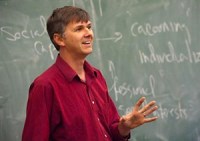
Chris Koliba
University of Vermont
Experimental Economics
Click photo to close
Dr. Koliba's research interests include organizational learning and development, governance systems and networks, cross sector collaborations, action research methods, civic education, and educational policy.
Chris Koliba
ckoliba@uvm.eduDr. Koliba's research interests include organizational learning and development, governance systems and networks, cross sector collaborations, action research methods, civic education, and educational policy.
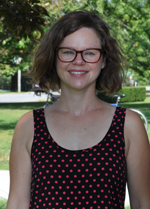
Katherine Logan
University of Vermont
Experimental Economics
Click photo to close
Katherine pursued PhD studies in philosophy at the University of Oregon, with an emphasis in social and political philosophy and women's and gender studies. She plans to complete her dissertation by the spring of 2016. She is currently on a two-year leave from her PhD program, having decided to relocate to Vermont with her family. Here at UVM, she is a graduate research and teaching assistant and MPA candidate, hoping to gain the skills that are necessary so that she can craft a career as a public servant, educator, researcher, and policy analyst.
Kathrine Logan
Katherine.Logan@uvm.eduKatherine pursued PhD studies in philosophy at the University of Oregon, with an emphasis in social and political philosophy and women's and gender studies. She plans to complete her dissertation by the spring of 2016. She is currently on a two-year leave from her PhD program, having decided to relocate to Vermont with her family. Here at UVM, she is a graduate research and teaching assistant and MPA candidate, hoping to gain the skills that are necessary so that she can craft a career as a public servant, educator, researcher, and policy analyst.
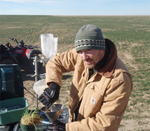
Scott Merrill
University of Vermont
Experimental Economics group
Click photo to close
I examine dynamics of change within pest-crop agroecosystems and study the effects of climate change on agroecosystems. To address these issues, I use a variety of techniques in population modeling, spatiotemporal forecast modeling and landscape ecology. An important goal of my work is the creation of applicable and predictive models to inform Integrated Pest Management systems.
Scott Merrill
scott.c.merrill@uvm.eduI examine dynamics of change within pest-crop agroecosystems and study the effects of climate change on agroecosystems. To address these issues, I use a variety of techniques in population modeling, spatiotemporal forecast modeling and landscape ecology. An important goal of my work is the creation of applicable and predictive models to inform Integrated Pest Management systems.
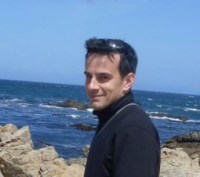
Brian Pellerin
USGS, California Water Science Center
Sensor Project
Click photo to close
I am a research soil scientist in the Biogeochemistry Group at the California Water Science Center. Despite my title, most of my work actually takes place in rivers and streams. My research tries to better understand the impact of land use and climate change on watershed hydrology, ecosystem processes and surface water quality. I use a variety of tools, but much of my recent effort focuses on the application of in situ optical sensors for carbon and nutrient studies in freshwater systems.
Brian Pellerin
bpeller@usgs.govI am a research soil scientist in the Biogeochemistry Group at the California Water Science Center. Despite my title, most of my work actually takes place in rivers and streams. My research tries to better understand the impact of land use and climate change on watershed hydrology, ecosystem processes and surface water quality. I use a variety of tools, but much of my recent effort focuses on the application of in situ optical sensors for carbon and nutrient studies in freshwater systems.
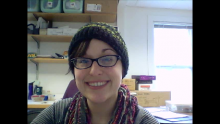
Janel Roberge
St Michael's College
Outreach
Click photo to close
Janel is the Research Technician for the Vermont EPSCoR Center for Workforce Development and Diversity. Janel has a BS in Biology from Saint Michael's College and was herself an EPSCoR Streams Project Undergraduate Intern. She is thrilled to be back in the EPSCoR family and is very much looking forward to mentoring interns of her own the Water Quality Lab during the summer session. When not working, her interests include (but are not limited to!) being a foodie, photography, interior design, and spending time outdoors.
Janel Roberge
jroberge@smcvt.eduJanel is the Research Technician for the Vermont EPSCoR Center for Workforce Development and Diversity. Janel has a BS in Biology from Saint Michael's College and was herself an EPSCoR Streams Project Undergraduate Intern. She is thrilled to be back in the EPSCoR family and is very much looking forward to mentoring interns of her own the Water Quality Lab during the summer session. When not working, her interests include (but are not limited to!) being a foodie, photography, interior design, and spending time outdoors.
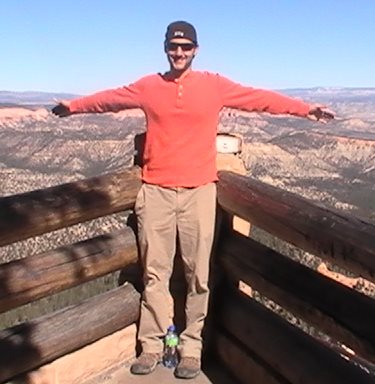
John Saraceno
USGS, California Water Science Center
Sensor Project
Click photo to close
I research, design and install a variety of optical sensor systems. These systems consist of sensors attached to real time programmable data loggers and telemetry systems.Their use facilitates the study of natural water biogeochemisty at high frequency. By using in situ sensors we often gain insight into the fast paced processes that often contribute to the natural cycles of important elements such as carbon, nitrogen, phosphorous and metals such as mercury. However, given that these tools were initially designed to operate in oceanic environments, a key thust of my research is the evaluation of sensor performance in highly colored, sediment-laden freshwaters. Recently, I have added the use of remotely operated aerial imaging drones (AV Raven) to the Center's research inventory.
John Saraceno
saraceno@usgs.govI research, design and install a variety of optical sensor systems. These systems consist of sensors attached to real time programmable data loggers and telemetry systems.Their use facilitates the study of natural water biogeochemisty at high frequency. By using in situ sensors we often gain insight into the fast paced processes that often contribute to the natural cycles of important elements such as carbon, nitrogen, phosphorous and metals such as mercury. However, given that these tools were initially designed to operate in oceanic environments, a key thust of my research is the evaluation of sensor performance in highly colored, sediment-laden freshwaters. Recently, I have added the use of remotely operated aerial imaging drones (AV Raven) to the Center's research inventory.

Linyuan Shang
University of Vermont
Graduate Research Assistant - Experimental Economics
Click photo to close
Linyuan Shang is starting his PhD studies in Natural Resources at The Rubenstein School of Environment and Natural Resources (RSENR) this January with Asim Zia and Carol Adair as his coadvisors. He comes to us from Purdue where he completed an M.S. in Earth and Atmospheric Science, working on simulating evapotranspiration of terrestrial ecosystems. His expertise in the environmental sciences and strong computational background are a great match for our efforts at VT EPSCoR.
Linyuan Shang
lshang@uvm.eduLinyuan Shang is starting his PhD studies in Natural Resources at The Rubenstein School of Environment and Natural Resources (RSENR) this January with Asim Zia and Carol Adair as his coadvisors. He comes to us from Purdue where he completed an M.S. in Earth and Atmospheric Science, working on simulating evapotranspiration of terrestrial ecosystems. His expertise in the environmental sciences and strong computational background are a great match for our efforts at VT EPSCoR.
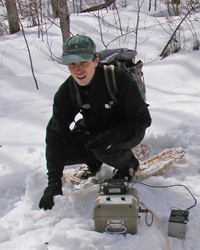
James Shanley
USGS, New England Water Science Center
Sensor Project
Click photo to close
James Shanley is a research hydrologist and biogeochemist with the United States Geological Survey (USGS), an organization within the U.S. Department of Interior that is probably best known for topographic mapping and stream gaging and water quality monitoring and research.
At the Montpelier, Vermont USGS field office, Jamie studies atmospheric inputs of chemicals, including those associated with acid rain, and traces how they move through and out of Northern Forest ecosystems in stream water. His work focuses principally on the pollutants nitrogen, sulfur, and mercury.
James Shanley
jshanley@usgs.govJames Shanley is a research hydrologist and biogeochemist with the United States Geological Survey (USGS), an organization within the U.S. Department of Interior that is probably best known for topographic mapping and stream gaging and water quality monitoring and research.
At the Montpelier, Vermont USGS field office, Jamie studies atmospheric inputs of chemicals, including those associated with acid rain, and traces how they move through and out of Northern Forest ecosystems in stream water. His work focuses principally on the pollutants nitrogen, sulfur, and mercury.
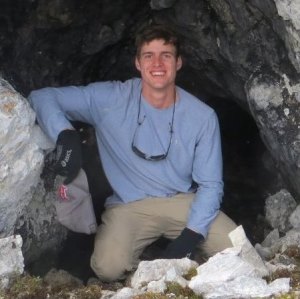
Ryan Sleeper
University of Vermont
Graduate Student
Click photo to close
Ryan is a M.S. candidate in the Natural Resources program with a concentration in Aquatic Ecology and Watershed Science at the University of Vermont. He graduated from the University of Vermont in 2013 with a B.S. in Environmental Science and a focus in water resources. As an undergraduate, Ryan worked as a research assistant for two summers in arctic Alaska and reanalyzed a unique data set of whole-stream metabolism for the Kuparuk River. After college he worked for Stone Environmental Inc. as a water resources scientist on a large and instrumented edge-of-field monitoring project. Ryan will utilize the continuous data being collected by NEWRnet to calculate whole stream metabolism for multiple streams and investigate its relationships with other water quality metrics.
Ryan Sleeper
rsleeper@uvm.eduRyan is a M.S. candidate in the Natural Resources program with a concentration in Aquatic Ecology and Watershed Science at the University of Vermont. He graduated from the University of Vermont in 2013 with a B.S. in Environmental Science and a focus in water resources. As an undergraduate, Ryan worked as a research assistant for two summers in arctic Alaska and reanalyzed a unique data set of whole-stream metabolism for the Kuparuk River. After college he worked for Stone Environmental Inc. as a water resources scientist on a large and instrumented edge-of-field monitoring project. Ryan will utilize the continuous data being collected by NEWRnet to calculate whole stream metabolism for multiple streams and investigate its relationships with other water quality metrics.
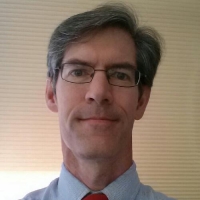
Scott Turnbull
University of Vermont
Software Developer
Click photo to close
Scott Turnbull
Scott is a computer systems engineer with an M.E. from Rensselaer Polytechnic Institute. In his previous employment at IBM he gained experience in software application architecture and implementation for microelectronic design tools. He also has experience in hardware application compatibility assessment.
Scott has lived in the Champlain Valley of Vermont for 25 years. Enjoying the mountain trails, rivers, and lakes.
Scott Turnbull
scott.turnbull@uvm.eduScott Turnbull
Scott is a computer systems engineer with an M.E. from Rensselaer Polytechnic Institute. In his previous employment at IBM he gained experience in software application architecture and implementation for microelectronic design tools. He also has experience in hardware application compatibility assessment.
Scott has lived in the Champlain Valley of Vermont for 25 years. Enjoying the mountain trails, rivers, and lakes.
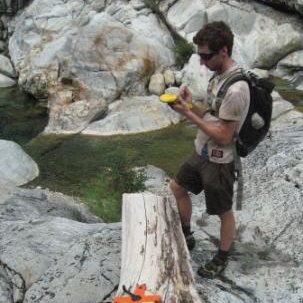
Matt Vaughan
University of Vermont
Graduate Student
Click photo to close
Matthew Vaughan is a PhD student at the Rubenstein School of Environment and Natural Resources. He is currently working to deploy an array of sensors throughout northern Vermont that will record high-resolution river water quality data. The monitoring locations target areas with varied land uses, so that the NEWRnet team can learn more about water quality response and nutrient fluxes for rivers in forested, agriculture, urban, and mixed landscapes. Matthew has a BA degree in Physics from Middlebury College, and recently completed an MS degree at the University of California at Davis, where his research focused on wood dynamics in mountain stream networks.
Matt Vaughan
matthew.vaughan@uvm.eduMatthew Vaughan is a PhD student at the Rubenstein School of Environment and Natural Resources. He is currently working to deploy an array of sensors throughout northern Vermont that will record high-resolution river water quality data. The monitoring locations target areas with varied land uses, so that the NEWRnet team can learn more about water quality response and nutrient fluxes for rivers in forested, agriculture, urban, and mixed landscapes. Matthew has a BA degree in Physics from Middlebury College, and recently completed an MS degree at the University of California at Davis, where his research focused on wood dynamics in mountain stream networks.
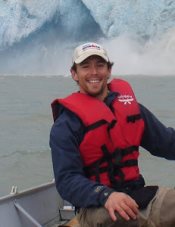
Andrew Vermilyea
Castleton
Sensor Project
Click photo to close
I have a diverse academic background grounded in Chemistry. As an undergraduate at Hamilton College, I pursued a senior project on the anoxic, abiotic degradation of chlorinated solvents on the surface on biogenic magnetite minerals. This project along with some other summer research experiences motivated me to apply for graduate programs in EnvironmentalChemistry. In graduate school at the Colorado School of Mines, I continued to study contaminate degradation, but this work focused on sunlit surface waters where indirect photochemical degradation was our main mechanistic focus. These mechanisms include reactive oxygen species (ROS), such as superoxide, hydrogen peroxide, and hydroxyl radical, and sometimes iron (as with the photo Fenton Reaction). Additionally, I studied and quantified biological rates of ROS production in freshwater bodies and during cruises in the Gulf of Alaska and around Bermuda. These reactions are important because ROS influence the bioavailability of redox active metals, some of which are trace and limiting nutrients (such as iron in the Pacific Ocean).
My post doctorate work at the University of Alaska Southeast broadened my research interests to include much larger scale systems. Here I tried to understand how landscapes and the very small mechanistic processes I have studied in the past influence the total export of nutrients from watersheds to a very productive coastal ecosystem like the Gulf of Alaska. The major question of interest to me for the coastal AK ecosystem is...how will nutrient export from these glaciated watersheds and the productivity in coastal waters change as our climate continues to warm and the glaciers continue to melt?
Andrew Vermilyea
andrew.vermilyea@castleton.eduI have a diverse academic background grounded in Chemistry. As an undergraduate at Hamilton College, I pursued a senior project on the anoxic, abiotic degradation of chlorinated solvents on the surface on biogenic magnetite minerals. This project along with some other summer research experiences motivated me to apply for graduate programs in EnvironmentalChemistry. In graduate school at the Colorado School of Mines, I continued to study contaminate degradation, but this work focused on sunlit surface waters where indirect photochemical degradation was our main mechanistic focus. These mechanisms include reactive oxygen species (ROS), such as superoxide, hydrogen peroxide, and hydroxyl radical, and sometimes iron (as with the photo Fenton Reaction). Additionally, I studied and quantified biological rates of ROS production in freshwater bodies and during cruises in the Gulf of Alaska and around Bermuda. These reactions are important because ROS influence the bioavailability of redox active metals, some of which are trace and limiting nutrients (such as iron in the Pacific Ocean).
My post doctorate work at the University of Alaska Southeast broadened my research interests to include much larger scale systems. Here I tried to understand how landscapes and the very small mechanistic processes I have studied in the past influence the total export of nutrients from watersheds to a very productive coastal ecosystem like the Gulf of Alaska. The major question of interest to me for the coastal AK ecosystem is...how will nutrient export from these glaciated watersheds and the productivity in coastal waters change as our climate continues to warm and the glaciers continue to melt?
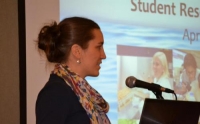
Lindsay Wieland
St Michael's College
Outreach
Click photo to close
Lindsay is the Director of the VT EPSCoR Center for Workforce Development and Diversity where she is involved in a variety of projects working to cultivate and prepare a strong STEM workforce in Vermont. Her work includes developing and coordinating outreach programs and workshops for students and educators interested in science, technology, engineering and math (STEM), and integrating students and teachers into the Research on Adaptation to Climate Change research program. Lindsay has a strong background in science education, outreach and conservation work having served as the Technical Coordinator at the School for Field Studies, and Database Coordinator at the National Park Service. She also taught science and English to high school students as a Peace Corps Volunteer in Mozambique. She holds a M.S. degree in Biology from LSU and a B.S. in Biology from Dickinson College.
Lindsay Wieland
lwieland@smcvt.eduLindsay is the Director of the VT EPSCoR Center for Workforce Development and Diversity where she is involved in a variety of projects working to cultivate and prepare a strong STEM workforce in Vermont. Her work includes developing and coordinating outreach programs and workshops for students and educators interested in science, technology, engineering and math (STEM), and integrating students and teachers into the Research on Adaptation to Climate Change research program. Lindsay has a strong background in science education, outreach and conservation work having served as the Technical Coordinator at the School for Field Studies, and Database Coordinator at the National Park Service. She also taught science and English to high school students as a Peace Corps Volunteer in Mozambique. She holds a M.S. degree in Biology from LSU and a B.S. in Biology from Dickinson College.
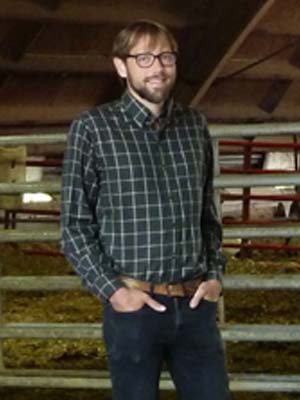
Serge Wiltshire
University of Vermont
Experimental Economics
Click photo to close
In my program at UVM, I'm working with my adviser, Christopher Koliba, to research public policy solutions which could help Vermont's dairy farmers to thrive economically while also addressing some of the environmental challenges we're facing as a state. I'll be using a mixture of qualitative research and computer modeling to assess how one specific practice, pasture-based dairy farming, can help to address both the economic and the environmental side of the equation.
Serge Wiltshire
Serge.Wiltshire@uvm.eduIn my program at UVM, I'm working with my adviser, Christopher Koliba, to research public policy solutions which could help Vermont's dairy farmers to thrive economically while also addressing some of the environmental challenges we're facing as a state. I'll be using a mixture of qualitative research and computer modeling to assess how one specific practice, pasture-based dairy farming, can help to address both the economic and the environmental side of the equation.
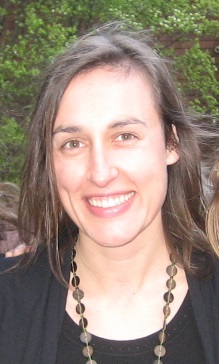
Laura Yayac
University of Vermont
Outreach
Click photo to close
Laura is the Project Manager of the VT EPSCoR Center for Workforce Development and Diversity. She coordinates and manages the logistics of CWDD programs. Laura has a background in outdoor and environmental education and outreach. She has an M.S. from the Field Naturalist and Ecological Planning program at UVM and a B.S. in Natural Resource Management from the University of Delaware.
Laura Yayac
lyayac@smcvt.eduLaura is the Project Manager of the VT EPSCoR Center for Workforce Development and Diversity. She coordinates and manages the logistics of CWDD programs. Laura has a background in outdoor and environmental education and outreach. She has an M.S. from the Field Naturalist and Ecological Planning program at UVM and a B.S. in Natural Resource Management from the University of Delaware.
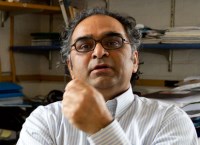
Asim Zia
University of Vermont
Experimental Economics
Click photo to close
Dr. Zia investigates the role of adaptive decision making in the design, implementation and evaluation of public policies at multiple governance levels. In particular, his research is focused on Policy Analysis of Complex Systems, Collaborative Governance Mechanisms and Meta-Decision Analysis.
Asim Zia
azia@uvm.eduDr. Zia investigates the role of adaptive decision making in the design, implementation and evaluation of public policies at multiple governance levels. In particular, his research is focused on Policy Analysis of Complex Systems, Collaborative Governance Mechanisms and Meta-Decision Analysis.